
Ferenc Sebő
Folk Music From Lőrincréve = Lőrincréve Népzenéje
Album HU 1986 on Hungaroton label
Folk (Folk, Népzene)
℗ 1986 Hungaroton Made in Hungary Liner notes and lyrics on backcover and 12" insert: A Maros menti nagyhagyományú zenekultúra egykori "hivatásos" előadói, a régi cigányzenész dinasztiák rendre kihaltak. Megüresedett helyüket az utóbbi évtizedekben kevésbé képzett parasztmuzsikosok töltötték be, akik az örökölt nagymúltú hagyományt egyszerűbb technikai eszközökkel élve mutatták fel számunkra. Ilyen muzsikás volt Székely Zsigmond is, aki 1935-ben született Lőrincrévén és 1975-ben települt át Magyarországra. 1985-ben bekövetkezett haláláig sok felvétel készült hegedűjátékáról, mely a II. világháborút követő idők falusi tánczenei divatját tükrözte. Ez a repertoár meglepően sok régies elemet tartalmazott, különösen az "öreges csárdás" műfajában. Az őt megelőző nemzedék zenekedveléséről viszont Karsai Zsigmond emlékezete tanúskodik, aki 1920-ban született Lőrincrévén. A háború után, Pécelre áttelepülve, festőművész lett. Énekei és tánca révén vált közismertté, s elnyerte a "Népművészet Mestere" címet. A Zeneműkiadó Vállalat 1982-ben jelentette meg Kiss Lajos "Lőrincréve népzenéje – Karsai Zsigmond dalai" című könyvét, amely 25 év gyűjtőmunkájának eredményeiből válogatva adta közre Karsai falumonográfiával felérő dalkincsét. A kötetben a szöveges énekek mellett jelentős mennyiségű fütyült – hangszerjátékot utánzó – szövegtelen dallam is helyet kapott. Mindezeket a dallamokat összevetve Székely Zsigmond hegedűjátékával, majd a környékbeli muzsikásoktól gyűjtött változatokkal is, mintegy 200 törzsből álló hangszeres dallamgyűjtemény kerekedett ki. E gyűjtemény válogatott darabjai szólalnak meg ezen a lemezen. Mivel a többnyire házilagos eszközökkel készült gyűjtői felvételek technikai minősége nem tette lehetővé egy dokumentumválogatás közreadását (Székely Zsigmond korai halála miatt új felvételek sem készülhettek), a rekonstrukció megoldását választottuk. Esetünkben a rekonstrukció fogalma többrétű: elsősorban azt a hangzást szerettük volna felidézni, amely a II. viláhgáború előtti években adatközlőink személyes élménye volt, s amelynek mintáját a már említett híres zenészdinasztiák (Nuci, Ámosz, Murkos stb.) többnyire háromtagú együttesei szolgáltatták: hegedű-brács-bőgő felállásban. Ennek megoldása a gyűjtött dokumentumanyag autentikus stílusban való elsajátítása és újrajátszása volt. Másodsorban szerettük volna azokat a történelmi távlatokat is érzékeltetni, amelyek csak a gyűjtött anyag tudományos vizsgálata során rajzolódhatnak ki a kutató előtt. Itt nem csupán érdekes dallam-egyezésekről van szó (például a B/3 Pontozó visszatérő dallama a nagyszombati kézirat zenekari táncainak egyikét idézi!), hanem arról a hallatlanul izgalmasés alapos tanulmányozást érdemlő párhuzamról is, mely a 18. század végi városi zenekarok Magyarország-szerte játszott repertoárjának stílusalkotó közhelyei és egy dél-erdélyi, falusi hangszeres táncmuzsika általános fordulatai közt vonható. A háttérből, asszociációként felsejlő hangszerelés ezt a "térbeliséget" hivatott érzékeltetni. A tánckísérő zene meghatározóan fontos kapcsolatban áll magával a tánccal. Lőrincréve táncairól dr. Martin György írt kimerítő tanulmányt. Az ő leírásait alapul véve tekinthetjük át azokat a tánctípusokat, amelyek a lemezünkön "táncrend"-szerűen hallható zenékhez tartoznak. A/1. a) Öreges csárdás A páros tánc első, lassú része, melyhez gyorsdűvős kontrakíséret járul. Kivételesen gazdag, régi, ereszkedő jellegű dallamkincsét vokális alakban 8–11–16 szótagos és ún. "jaj-nóta" típusú dallamok alkotják. Az énekelt dallamváltozatokra (például A/2. b. c) az aszimmetria felé hajló ritmika és a szöveghez alkalmazkodás hiánya a jellemző, ami a dallamritmika régies önállóságára mutat. A/1. b) Gyors csárdás A párostánc második, már kifejezetten csárdásnak nevezett középső részében az új csárdásstílus hatása érvényesül. E táncrész gyorsabb, de lassú dűvős zenéje az általános csárdás-tempónak felel meg. Dallamkincsét a régi "lassú" meggyorsított dallamai mellett elsősorban a pontozott, alkalmazkodó ritmusú, közismert, főleg tripodikus (3 ütemű sor) új stílusú és népies műdalok jellemzik. A/1. c) Szapora (Haţegana) A páros tánc friss része, melynek gyors "esztamos" kísérőzenéjére nyolcados alapmozgású pontozatlan tetrapodikus (kolomejka) dallamok jellemzőek. Nem túl gazdag dallamkincsében kevés a régi dallam a mai erdélyi friss mindenütt ismert divatdallamai mellett. Ez utóbbiak újabb székely, román, cigány vagy magyar népies műzenei darabok kölcsönzései. A/3. a) Învîrtita A lőrincrévi románság jellegzetes páros, forgós tánca, mely aszimmetrikus és szinkópás, daktilikus ritmusú lépésekből épül fel. A közepes tempójú tetrapodikus (4 ütemű sor) dallamok között ritmikailag átértelmezett "öreges csárdás"-dallamok is előfordulnak. A kontrakíséret aszimmetrikus, dűvő. A/3. b) Haidău Lassú férfitánc, melyet a Maros-völgy középső szakaszának román falvaiban táncolnak. Tempója jóval lassúbb az erdélyi legényes általános gyors típusánál. Kísérő dallamai ún. "ardeleána"-típusú dallamok, melyeknek tetrapodikus négysoros strófái két periódusból állnak. A kanásztánc és a legényes dallamaitól lassú tempója különbözteti meg. B/1. Pontozós öreges csárdás Ez a műfajma már csak zenében különíthető el, mivel a tánc az öreges csárdással azonos. Egy olyanfajta legényes tánc sejthető mögötte, amelyet a környék más falvaiban lassú pontozóként még ma is táncolnak, Lőrincrévén csak az öreges csárdás bizonyos dallamai jelzik valamikori jelenlétét. A kísérőzene az öreges csárdáséval azonos kontrakíséretű, tetrapódikus, hat-, illetve négysoros dallamokból áll. az "ardeleána"-típusú dallamok felbontásukkal a pontozóra, zárlati sémájukkal viszont az öreges csárdásra emlékeztetnek. B/3; B/5. Pontozó Virtuóz fárfitánc, mely valaha tánckezdő funkciót töltött be; az Erdély-szerte széles körben ismert "sűrű legényes" Maros és Küküllő menti változata. Kísérőzenéjének kontrakísérete gyorsdűvős, gazdagon figurált nyolcados mozgású dallamai tetrapodikus sorokból állnak s többnyire két – néha több – zenei periódusból épülnek fel. A tánc alapegysége a pontnak nevezett nyolcütemes zárt táncszakasz. A zene szorosan követi a tánc diktálta szerkezeti elveket: a táncbeli zárlatok helyén (a periódusok végén) a zenében is zárlat van. The once „professional” performers of the musical life of great tradition along the river Maros, the old Gypsy musician dynasties, died out one after another. Their vacant place in the past decades has been taken by less skilled peasant-musicians who present us the inherited tradition with a great past by means of simpler technical means. Such a musician was Zsigmond Székely too, who was born in Lőrincréve in 1935 and moved to Hungary in 1975. Until his death in 1985 a lot of recordings of his fiddling were made, which reflected the country dance-music fashion of the period following World War II. This repertory contained a surprisingly great deal of old-fashioned elements especially in the genre of the „oldish csárdás”. On the other hand Zsigmond Karsai’s memory manifests the preceding generation’s love of music, as he was born in Lőrincréve in 1920. After World War II. he moved to Pécel and became a painter. He became well-known for his singing and dancing and was awarded the title of „The Master of Folk Art”. The Editio Musica Budapest brought out Lajos Kiss’s book entitled „The Folk Music of Lőrincréve – Zsigmond Karsai’s Songs” in 1982; the book which issued Karsai’s knowledge of songs being worth as much as a village monograph selecting from 25 years’ collection. In the volume, besides songs with words whistled-imitating instrumental playing tunes without words in significant quantity have found place. Comparing all these tunes to Zsigmond Székely’s fiddling to versions collected from musicians of the neighbourhood there has come together a collection of instrumental tunes consisting of some 200 branches. The selected pieces of this collection figure on the record. Since the technical quality of the mainly homemade field-worker’s recordings did not make possible the publishing of a selection of documents (because of Zsigmond Székely’s early death new recordings could not be made), we have chosen the way of reconstruction. In our case the concept of reconstruction is manifold: primarily we wanted to recall the sound which was the personal experience of our performers before before World War II and the model of which was provided by in most instances three-member groups of the already mentioned famous musician-dynasties (as Nuci, Ámosz, Murkos, etc.) consisting of fiddle-viola-double bass. We have done it by attaining and replaying the collected documentation in an authentic style. Secondly we wanted to represent the historical prospects which can be outlined before research workers while scientificially studying the collected material. Here not only interesting tune-accords are concerned (for example the recurring tune of the Marking Lad’s Dance – B/3 recalls one of the orchestral dances of the Nagyszombat Manuscript!) but the extremely exciting parallel beint worth a thorough study is also concerned which can be drawn between the styleforming commonplaces of city orchestras’ repertories of the end of the 18th century played all over Hungary and the general turns of South-Transylvanian country instrumental dance-music. The instrumentation emerging as association from the background has the purpose of suggesting this „spatiality”. Music accompanying dances is in definedly important connection with dances themselves. Dr. György Martin wrote a comprehensive study on the dances of Lőrincréve. Taking his description as our starting point we can survey the dancetypes which belong to the musics which can be heard on our record „as a programme of dance”: A/1a Oldish Csárdás This is the first, slow part of couple dances going with a quick kontra-accompaniment. Its exceptionally rich, old tune-treasure of descending character is formed of eight-, eleven-sixteen-syllable and the so called „plaint-song”-type tunes in vocal form. In the sung tune-versions (for example A/2. b, c) the rhythms tending to be asymmetric and the lack of any adaptation to the words are characteristics which show the old-fashioned independence of tune-rhythms. A/1. b) Fast csárdás In the second part of couple dances, that is expressively called csárdás, the influence of the new csárdás-style predominantes. This part is quicker, but its music with slow accompaniment corresponds to the general csárdás-tempo. Beside the quickened tunes of the old „slow” primarily the dotted, well-known, mainly tripodic new-style and popular art songs are charecteristic of its tune-treasure. A/1. c) Quick (Hategana) It is the quick part of couple dances, the quick „esztamos” accompaniment of which is characterized with undotted tetrapodic (kolomejka) tunes with quaver basic movements. In its not too rich tune-treasure there are few old tunes beside the everywhere known fashionable tunes of the present-day Transylvanian quick. These later ones are borrowings from newer Székely, Rumanian, Gypsy or Hungarian popular art-musical pieces. A/3. a) Invirtita This is the characteristic whirling couple dance of the Rumanians in Lőrincréve which consists of steps of asymmetric and syncopated, dactylic rhythm. There can be found rhythmically reinterpreted „oldish csárdás” tunes between the tetrapodic tunes of moderate tempo. The kontra-accompaniment is asymmetric. A/3. b) Haidau It is a slow man’s dance being danced in villages of the middle section of the river Marosvalley inhabited by Rumanians. Its tempo is much slower than the general quick type of the Transylvanian lad’s dance. Its accompanying tunes are of the socalled „ardeleána” (Transylvanian) type, the tetrapodic four-line verses of which consist of two periods. Its slow tempo makes it different from the tunes of the swineherd’s dance and the lad’s dance. B/1. Marking Slow Lad’s Dance (Oldish Csárdás) Today this genre can only be separated in music since the dance is the same as the oldish csárdás. The kind of lad’s dance can be supposed behind it which is still danced in the other villages of the neighbourhood nowadays as „slow marking lad’s dance”. In Lőrincréve only certain tunes of the slow lad’s dance show its former presence. The accompaniment consists of kontra-accompanied, tetrapodic four- or sixline tunes being the same as that of the oldish csárdás. Tunes of „ardeleána” –type resemble the lad’s dance in their melody pattern but they resemble the oldish csárdás in their cadence schemes. B/3; B/5. Marking Lad’s Dance This is a virtuosic man’s dance which used to have a dance-beginning function; it is the rivers Maros and Küküllő environment variation of the „fast lad’s dance” well-known all over Transylvania. The kontra-accompaniment of its accompanying music is quick, its richly figured tunes with quaver movements consist of tetrapodic lines and in most instances of two – sometimes more – musical periods. The fundamental unit of the dance is the eight-measure closed dance-section called a point. The music closely follows the structural principles dictated by the dance: in the place of cadences in the dance (at the end of periods) there are cadences in the music as well.
Musicians
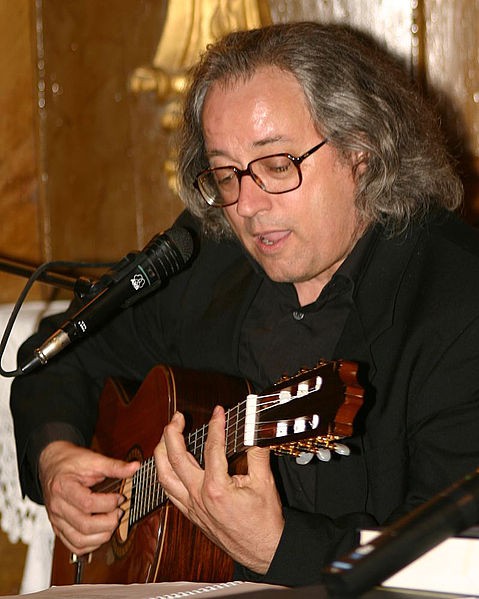 | Ferenc Sebő voc, *1947 HU arranged by, producer, liner notes, fiddle, second, recorded by, album by |
 | Judit Kiss-Domonkos cello |
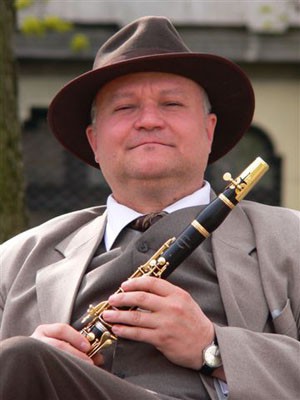 | József Balogh cl, *1956 clarinet |
 | Albert Nagy double bass |
 | János Bohus , engineer, balance |
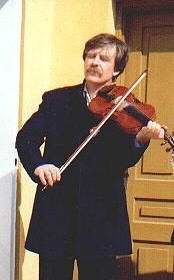 | András Jánosi vn, fiddle |
 | Levente Székely vn, fiddle |
 | Kornélia Gáspár flute |
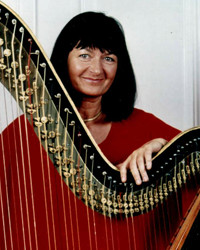 | Éva Maros hrp, perc, *1946 harp |
 | Erzsébet Hosmann harpsichord |
 | Jenő Keveházi alp, *1949 horns |
 | János Keveházi alp, frh, horns |
 | Imre Selmeczi , lacquer cut by |
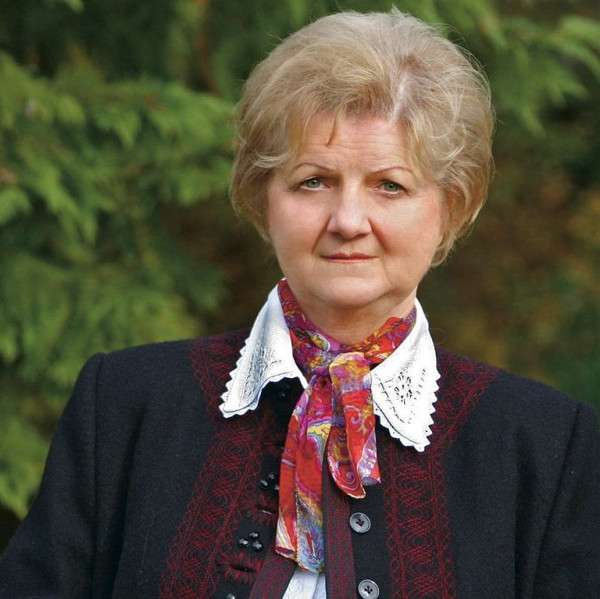 | Klára Bodza voc, leader, vocal ensemble |
 | József Gombai ob, oboe |
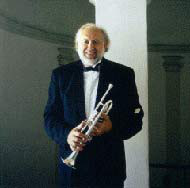 | György Geiger tr, *1944 trumpet |
 | Andrea Kenderesi vocals, vocal ensemble |
 | Andrea Szapári vocals, vocal ensemble |
 | Beáta Andó voc, vocals, vocal ensemble |
 | Katalin Izsák voc, vocals, vocal ensemble |
 | Katalin Kovács vocals, vocal ensemble |
 | Lívia Krasznavölgyi vocals, vocal ensemble |
 | Zsigmond Karsai voice |
 | Zsigmond Székely voice |
Producers
| Éva Gyönyör design, photography by |
| Attila Vécsey photography by |
| Ibolya Tóth producer, recording |
Album Tracks
| No | Title | Artist | Composer | Duration |
|---|---|---|---|---|
| 1 | Maros Menti Táncmuzsika = Dance Music By The Maros Riverside | Ferenc Sebő | ||
| 2 | Öreges = Oldish Csárdás | Ferenc Sebő | 12:50 | |
| 3 | Gyors = Fast Csárdás | Ferenc Sebő | ||
| 4 | Szapora = Quick (Haţegana) | Ferenc Sebő | ||
| 5 | Dűljön Le A Botfalvi Vár! = Let The Castle In Botfalva Fall! | Ferenc Sebő | 7:34 | |
| 6 | Megyek Az Úton Lefelé = I Walk Along The Road | Ferenc Sebő | ||
| 7 | Édesanyám, Mondanék Én Valamit = Mother, I Would Tell You | Ferenc Sebő | ||
| 8 | Învîrtita | Ferenc Sebő | 4:30 | |
| 9 | Haidău | Ferenc Sebő | ||
| 10 | Pontozós Öreges Csárdás = Marking Slow Lad's Dance (Oldish Csárdás) | Ferenc Sebő | 6:24 | |
| 11 | Szabad Madár Vagy Te, Babám = You Are A Free Bird | Ferenc Sebő | 2:02 | |
| 12 | Kék Ibolya, Ha Leszakítanálak = Blue Violet | Ferenc Sebő | ||
| 13 | Pontozó I. = Marking Lad's Dance I. | Ferenc Sebő | 7:55 | |
| 14 | Kék Ibolya, Ha Leszakítanálak = Blue Violet | Ferenc Sebő | 3:23 | |
| 15 | Falu Végén Van Egy Vályú = There Is A Through | Ferenc Sebő | ||
| 16 | Én Istenem, Teremtőm = Oh, My God, Good Lord | Ferenc Sebő | ||
| 17 | Pontozó II. = Marking Lad's Dance II. | Ferenc Sebő | 5:54 |
